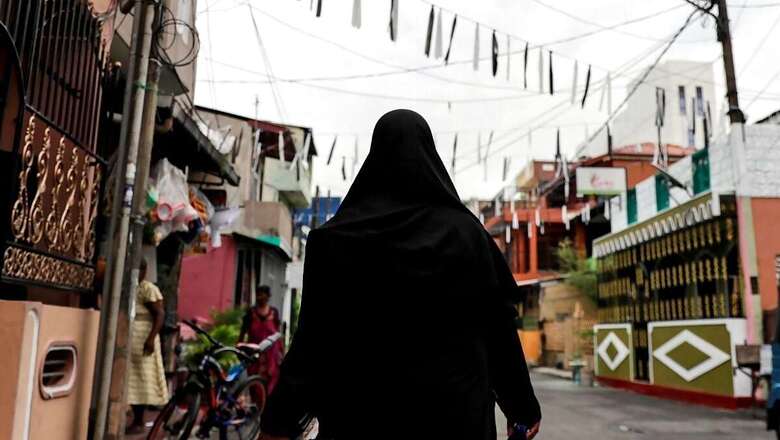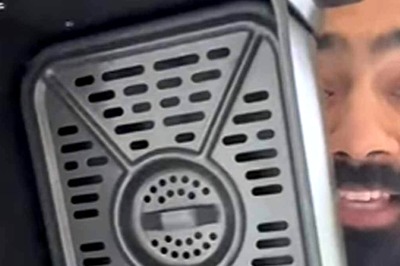
views
The Sri Lankan government is actively considering a proposal to ban burqa in the country. This controversial move, which is likely to pit Sri Lanka’s minority Muslim community against the ruling Sinhalese Buddhist majority government, has been initiated by public security minister Retired Rear Admiral Sarath Weerasekara.
Minister Weerasekara, a close confidante of President Gotabaya Rajapaksa, has confirmed the development claiming he has already signed the Cabinet paper, recommending a total ban on Muslim women wearing the burqa.
If the Cabinet approves his proposal, burqa ban will become a law, making wearing it illegal across the island nation.
“Burqa is new to Sri Lanka. Earlier, no Muslim women used to wear burqa. Sri Lanka has had a peaceful coexistence with all religions for long. These days, some women wear burqa. It poses a grave threat to national security”, the minister said.
The proposal to ban burqa has been there for quite some time. The majority Buddhist Sinhalese have been demanding a ban on it claiming it is against Sri Lankan ethos and culture.
However some Muslim organisations defend it, claiming it is their fundamental right to wear burqa and the government can’t ban it.
After the deadly Easter Sunday attacks of 2019, the government is under tremendous pressure to keep a surveillance on Muslims and ban burqa. Several hardcore Buddhist Monks have also advocated a ban on burqa, calling it an Un-Sri Lankan practice.
Sri Lankan government fears that unless it acts tough, radicalisation of the community will continue dividing the small nation, vertically on the religious lines. Besides ban on burqa, the government has also decided to shut down over 1,000 Madrassas across the Island.
There has been a widespread belief that these Arab world-funded Madrasas are radicalising the Sri Lankan Muslim youth in the name of religion.
In a country of 22 million people, the Muslims account for about 10% (a little over 2 million). They are mainly into trade and many of them are extremely wealthy. In the national capital Colombo, most of the trade is controlled by the Muslims. Unlike India, Muslims are relatively well off across Sri Lanka.
Muslims have a large presence in the North–Eastern province and several Easter suicide bombers are from Batticaloa city there.
Though almost all Muslims (except Malay Muslims) speak Tamil and share a common culture, they don’t consider themselves Tamils and maintain that they are different. This led to the late LTTE leader V Prabhakaran expelling all of them from the North in the 1990, making lakhs of them homeless overnight.
Of late, communal clashes have become a regular feature with a sudden lull.
In his brilliant book on Sri Lanka, “Upon A Sleepless Isle”, journalist Andrew Fidel Fernando writes “where in the 1990s, there was almost never a burqa or niqab to be seen on the street, face coverings had burst into popularity, in the 21st Century, causing consternation in the wider society – well beyond the nationalist mobs. Though Sri Lanka’s traditional Sufi influenced Sunni Muslims remained the overwhelming majority, the Sunnis had recently begun to feel imperiled by the velocity of the Wahhabi advance. Saudi clerics descended on towns such as Kattankudy by the busload. With the snap of their fingers, they acquired the funds to set up their mosques and madrassas”.
Many Sri Lankan Muslims agree that rising Wahhabi influence is ruining the century old relationship with the majority Buddhist Sinhalese and making them a collateral damage.
If the ban on burqa is implemented, it will certainly lead to a furore in the country.
Read all the Latest News, Breaking News and Coronavirus News here


















Comments
0 comment